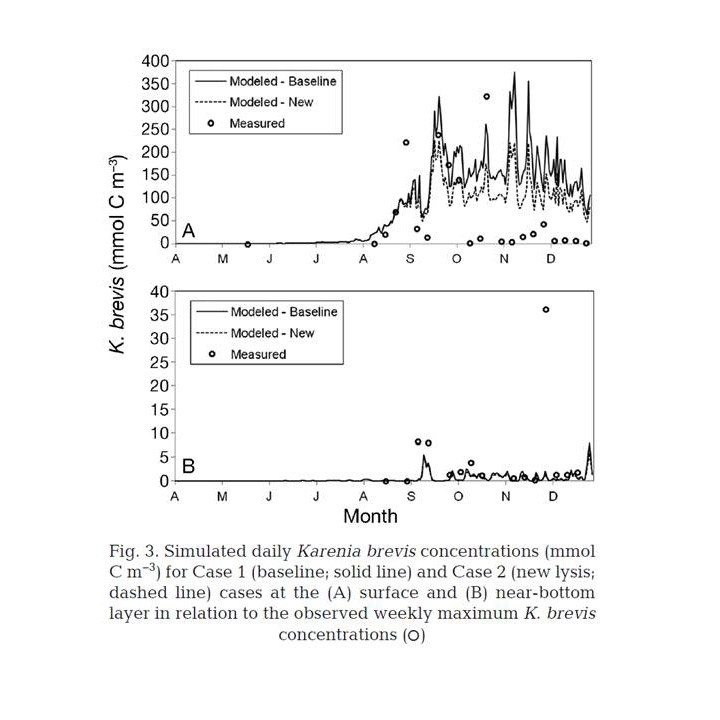
Simulating cell death in Karenia brevis blooms
Simulating cell death in the termination of Karenia brevis blooms: implications for predicting aerosol toxicity vectors to humans
ABSTRACT: To predict both waterborne and aerosolized toxin vectors associated with harmful algal blooms (HABs) of Karenia spp. in European, Asian, and North American waters, loss processes associated with distinct stages of bloom development, maintenance, and termination must be defined in relation to their toxins. In the case of Karenia brevis, exposure to brevetoxins (PbTx during maintenance phase is detrimental to marine life. In addition, release of PbTx-2,3 during cell death leads to respiratory difficulties in mammals. Human asthma attacks and chronic obstructive pulmonary disease occur once HAB toxins are aerosolized and transported to the coast. Here, we tested the hypothesis that heterotrophic bacterioplankton are a major source of mortality for Karenia HABs. A non-linear lysis term for simulation of K. brevis HAB termination on the West Florida Shelf was introduced, with the assumption that particle encounters of planktonic microalgae and bacteria can be described as the square of the phytoplankton biomass. This formulation also accounts for nutrient-limitation of K. brevis as a precondition for susceptibility to bacterial and viral attack, and potentially programmed cell death. Two model simulations were run of linear and non-linear lysis cases. Model output was compared against observed weekly maximum K. brevis concentrations, with statistical metrics calculated over 3 HAB phases during 2001. Introduction of the non-linear lysis term increased the modeling efficiency by 0.68 due to improved reproduction of the bloom termination.


